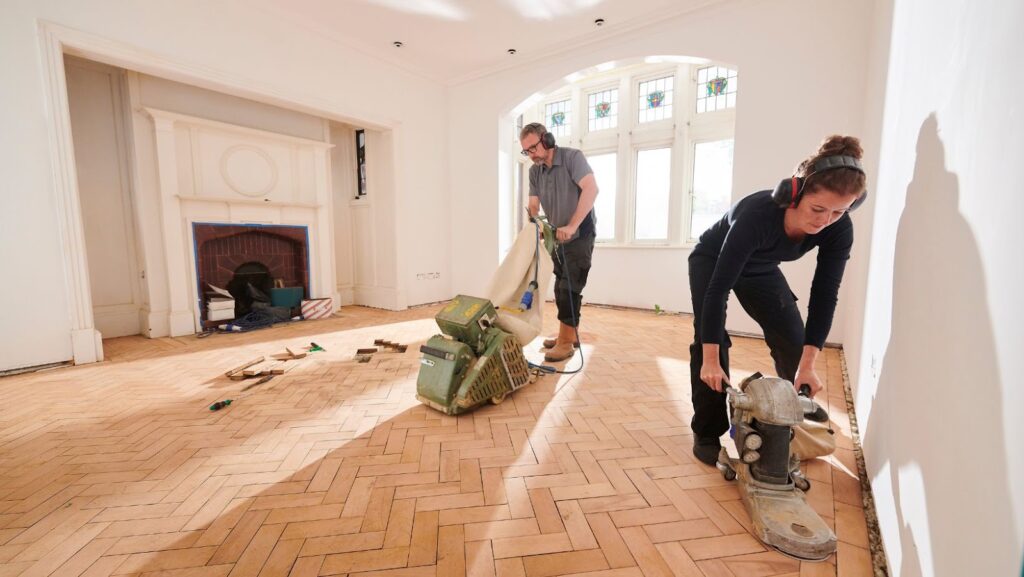When it comes to creating a safe and secure environment, one important aspect that often gets overlooked is the flooring. Whether it’s in a residential setting or a commercial space, having proper flooring can significantly reduce the risk of accidents and injuries. In this article, we will explore some key considerations and practical tips to ensure safe and secure flooring. Let’s dive in!
Choosing the Right Flooring Material
The first step in ensuring safe and secure flooring is selecting the right material. Different types of flooring materials have varying levels of slip resistance, durability, and maintenance requirements. When making your choice, consider the specific needs of the area where the flooring will be installed. For example, a bathroom or a kitchen may require flooring with higher slip resistance compared to a bedroom or a living room.
Floor Slip Testing: Determining Slip Resistance
To ensure adequate slip resistance, it is important to conduct floor slip testing. This involves measuring the coefficient of friction (COF) of the flooring surface to determine its slip resistance. The COF is a measure of the frictional force between two surfaces in contact. Slip resistance can vary depending on the type of flooring material, its finish, and the presence of any contaminants like water or oil.
Hiring a professional floor slip testing service can help you accurately assess the slip resistance of your flooring. They will use specialized equipment and industry-standard testing methods to provide you with reliable results. Based on the test findings, you can make informed decisions about implementing additional safety measures if necessary.
Maintaining Clean and Dry Floors
Regular cleaning and maintenance are essential for safe and secure flooring. Keeping the floors clean and free from any spills or debris is crucial to prevent slips and trips. Establishing a cleaning routine and ensuring prompt clean-up of spills can significantly reduce the risk of accidents.

Depending on the type of flooring material, you may need specific cleaning products and techniques. Consult the manufacturer’s guidelines or seek professional advice to ensure that you use the appropriate cleaning methods that won’t compromise the integrity of the floor.
Installing Adequate Lighting
Proper lighting is another crucial aspect to consider when aiming for safe flooring. Insufficient lighting can lead to accidents, as people may not be able to see potential hazards on the floor, such as uneven surfaces or spills. Make sure to install adequate lighting fixtures in all areas, especially in high-traffic zones and stairways.
Using Slip-Resistant Mats and Rugs
Strategically placing slip-resistant mats and rugs in key areas can provide an extra layer of safety. These mats help absorb moisture and provide additional traction, reducing the risk of slips and fall. Consider placing them near entryways, in kitchens, and in areas prone to spills or wetness. Regularly check and replace these mats when they show signs of wear and tear.
Implementing Warning Signs and Markings
In areas where flooring hazards cannot be immediately addressed or fixed, using warning signs and markings can help alert people and prevent accidents. For instance, if a section of the floor is wet due to cleaning or maintenance, placing caution signs or using floor markings can help indicate the potential hazard.
Regular Inspections and Maintenance
Lastly, conducting regular inspections and maintenance of your flooring is essential to identify any potential issues and address them promptly. Look for signs of wear, loose tiles or floorboards, and any other damage that could compromise the safety of the flooring. Repair or replace damaged sections as soon as possible to maintain a secure environment.
To sum up, ensuring safe and secure flooring is a crucial part of maintaining a safe environment.

By selecting the right flooring material, conducting floor slip testing, maintaining cleanliness, providing adequate lighting, using slip-resistant mats, implementing warning signs, and conducting regular inspections, you can significantly reduce the risk of accidents and injuries.
Remember, prevention is key, and investing in the maintenance and safety of your flooring is an investment in the well-being of those who occupy the space. For expert advice and high-quality flooring solutions, consider reaching out to All Floors Center, who can help ensure that your flooring meets safety standards and enhances overall safety. By taking these proactive steps, you can create an environment that promotes safety, reduces the likelihood of slips and falls, and provides peace of mind for everyone who walks on your floors.


More Stories
How Outdoor Lighting Enhances Security and Aesthetic Appeal
The 5 Signs You Need Mold Removal in Toronto
Signs You Need Asbestos Removal in Edmonton